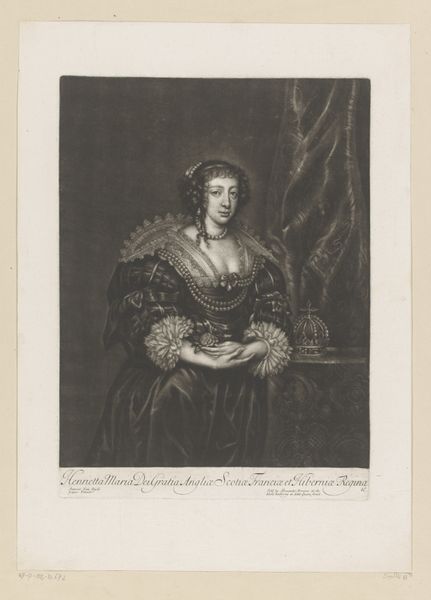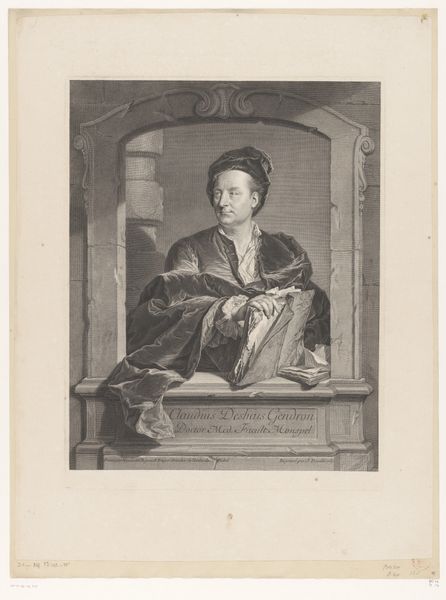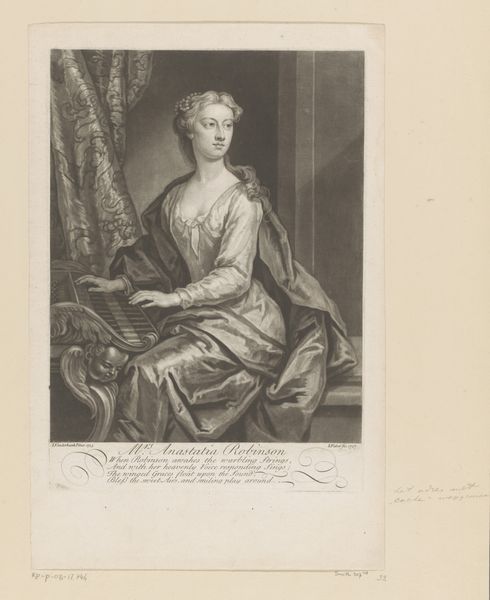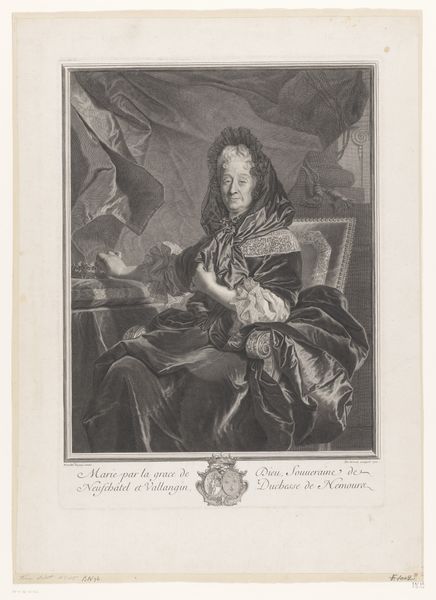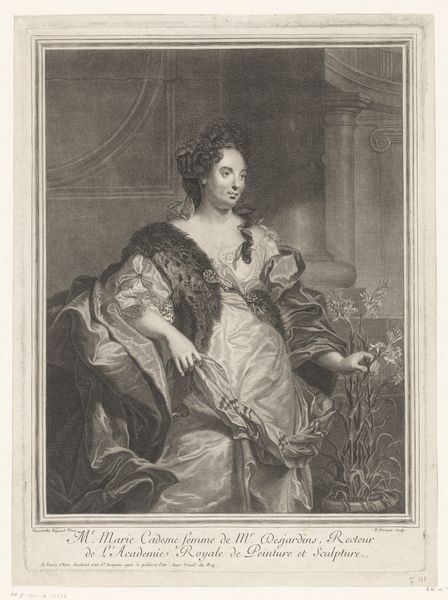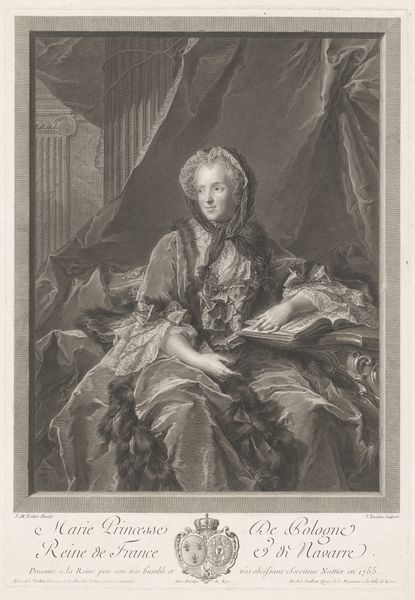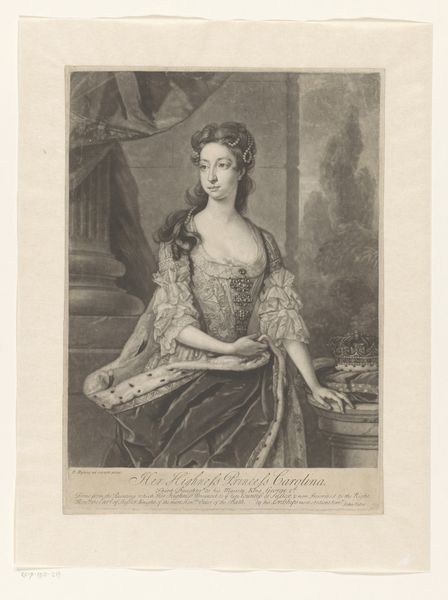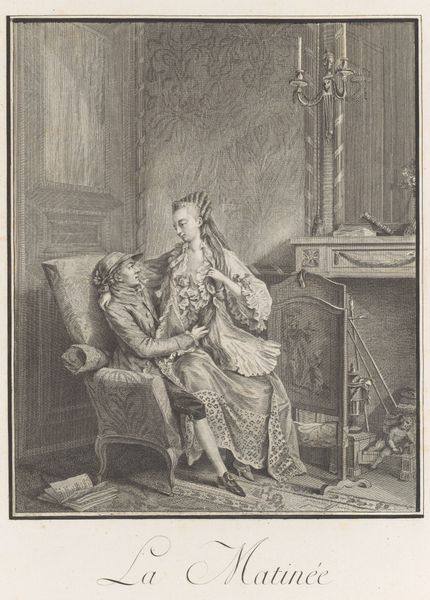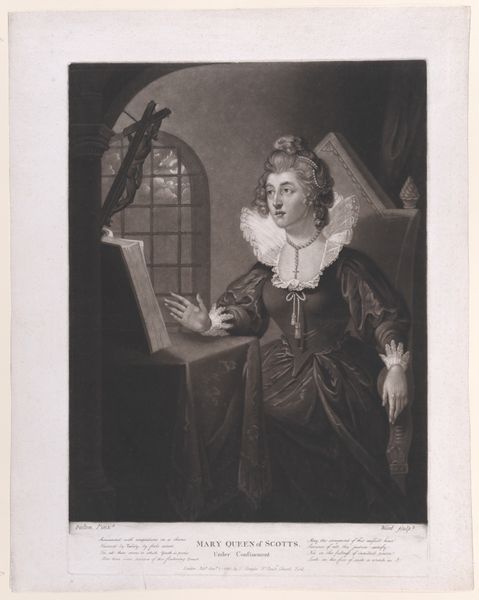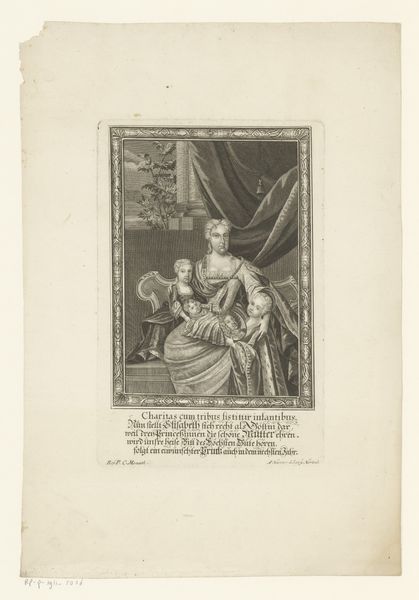
print, engraving
#
portrait
#
baroque
# print
#
19th century
#
engraving
#
watercolor
Dimensions: height 475 mm, width 355 mm
Copyright: Rijks Museum: Open Domain
Editor: This is Louis Desplaces' "Portret van Marguerite Bécaille" from 1715. It’s an engraving, so a print. She looks like a very stern, very wealthy woman. How should we interpret this image within its historical context? Curator: Let’s consider the power dynamics inherent in portraiture of this era. It was often a tool of social positioning. Can we understand Madame Bécaille’s depiction – her posture, her gaze, the details of her dress – as assertions of her identity and status within the aristocratic circles of 18th-century France? Editor: Yes, her dress and bearing definitely convey status. Does the fact that this is a print, rather than a painting, have implications? Curator: Absolutely. Printmaking allowed for wider circulation. Was this image intended for a small circle or wider dissemination? The choice of engraving suggests an intent to broadcast Madame Bécaille's image and, therefore, her influence more broadly. What does it mean that a woman's image and social standing was purposefully distributed? Editor: It seems like a deliberate projection of power. Her gaze is also so direct... challenging almost. Curator: Indeed. Consider the gaze not just as a passive reflection, but as an active engagement – even a confrontation – with the viewer. How might her widowhood have shaped her position, giving her more agency than other women of the time? Does the print perhaps subvert some conventional patriarchal structure by celebrating a widow who has property, standing, and possibly even her own voice? Editor: That's a very different lens through which to look at it. Thanks for offering these insights! Curator: Of course! And it is vital we remember to contextualize images like these in a wider political landscape of France at the time!
Comments
No comments
Be the first to comment and join the conversation on the ultimate creative platform.

